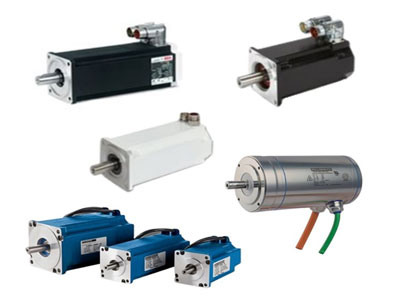
The 5 Types of Servo Motors
Servo motors are foundational components in today’s industrial automation systems. From robotics to CNC machinery, the various types of servo motors play key roles in ensuring precise control and motion. But not all servo motors are the same each type comes with unique characteristics and advantages suited to specific applications.
Whether you're upgrading a system, troubleshooting automation equipment, or selecting a drive for a new application, this guide will walk you through the five main types of servo motors and where they shine.
What Is a Servo Motor?
A servo motor is a closed-loop motor system that uses feedback to control motion, usually in terms of position, speed, or torque. These motors interpret command signals (either analog or digital) and respond by adjusting the output shaft accordingly either rotating to a precise angle or moving in a linear direction.
Key Components:
-
Motor: Provides motion
-
Controller: Receives and interprets input commands
-
Feedback device (often a potentiometer or encoder): Provides positional or velocity data for correction
-
Drive Circuitry: Executes the required adjustments
Common Uses of Servo Motors
Servo motors are valued for their accuracy, repeatability, and compact size, making them indispensable across various industries:
-
Robotics – Joint and arm movement
-
Conveyor Systems – Controlled acceleration and deceleration
-
CNC Machining – Precise cuts and paths
-
Military & Aerospace – Targeting systems, control surfaces
-
Food Processing & Packaging – High-speed labeling, filling, and sorting
The 5 Major Types of Servo Motors
Let’s explore the five most widely used servo motor types and how they compare.
1. DC Servo Motor
Overview:
The DC servo motor is one of the earliest types of servos used in automation. It’s governed by voltage input and is known for quick response, smooth rotation, and high starting torque.
Advantages:
-
Excellent for applications requiring rapid stop/start
-
High torque at low speeds
-
Easier to control via voltage variation
Common Uses:
-
CNC machines
-
Industrial automation systems
-
Compact mechatronics
2. AC Servo Motor
Overview:
An AC servo motor uses alternating current and is controlled via both voltage and frequency, offering smoother operation and higher energy efficiency than its DC counterpart.
Advantages:
-
Better suited for high-speed, high-accuracy applications
-
Lower maintenance due to fewer mechanical parts
-
Supports variable-speed control
Common Uses:
-
Robotics
-
Factory automation
-
Packaging equipment
3. Positional Rotation Servo Motor
Overview:
This is the most recognizable servo motor, often rotating within a fixed 180° arc. Internal physical stops prevent over-rotation, protecting internal components.
Advantages:
-
Simple, rugged, and cost-effective
-
Accurate positioning within a half-turn range
-
Easy to integrate into embedded systems
Common Uses:
-
Remote-controlled vehicles
-
Toy robotics
-
Camera gimbals and pan-tilt heads
-
Flight control surfaces in drones and aircraft
4. Continuous Rotation Servo Motor
Overview:
Unlike positional rotation types, continuous rotation servo motors can spin 360° indefinitely in either direction. The input signal determines the speed and direction not just the position.
Advantages:
-
Acts like a gearmotor with integrated feedback
-
Flexible speed control
-
Cost-effective for rotating tasks
Common Uses:
-
Conveyor systems
-
Autonomous robots
-
Drive wheels in mobile platforms
5. Linear Servo Motor
Overview:
A linear servo motor converts rotary motion into straight line motion via an additional gear system or magnetic rail setup. This type excels in applications requiring direct linear positioning.
Advantages:
-
Accurate linear displacement control
-
High thrust with minimal backlash
-
Compact form factor compared to mechanical linkages
Common Uses:
-
CNC table axes
-
Plotters and engravers
-
Automated inspection and cutting machines
Choosing the Right Servo Motor for Your Application
The right servo motor depends on:
-
Desired motion (rotational or linear)
-
Control precision (position, torque, or speed)
-
Load type and environment
-
Voltage and communication requirements
-
Cost and space limitations
Understanding these variables will help you match your application to the right motor type, minimizing wear, optimizing energy use, and increasing operational efficiency.
For more information, contact PLG Automation:
Email: sales@plgautomation.com
Phone: 800-906-9271
